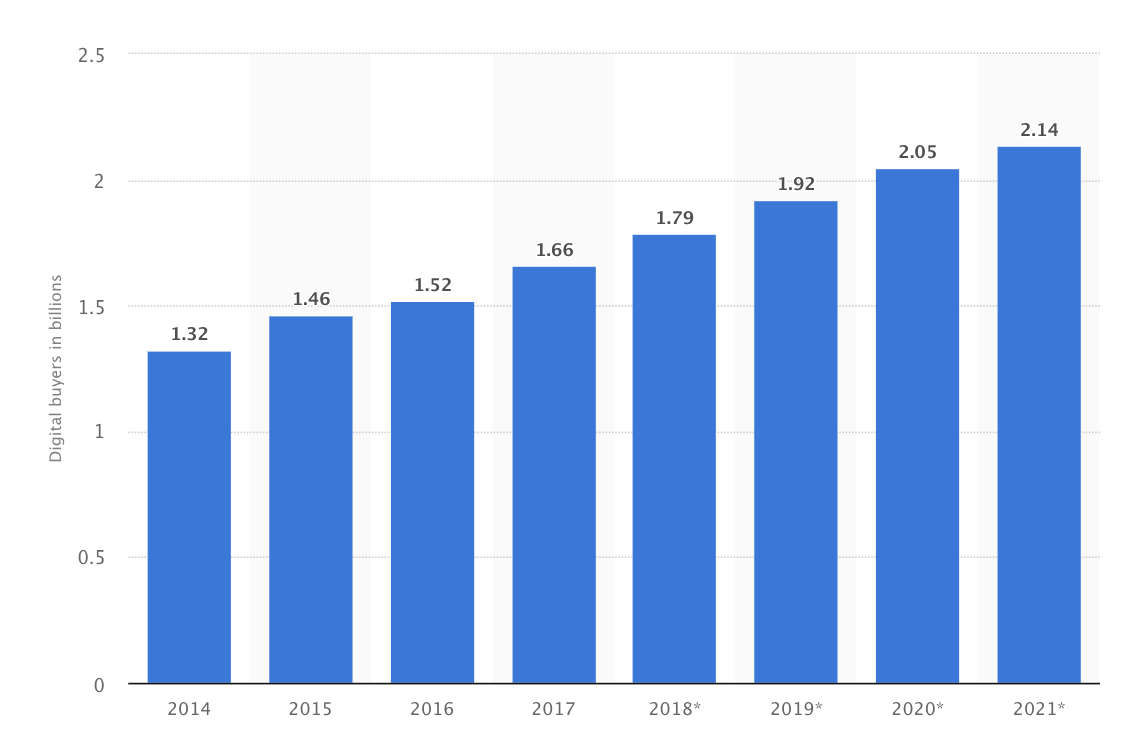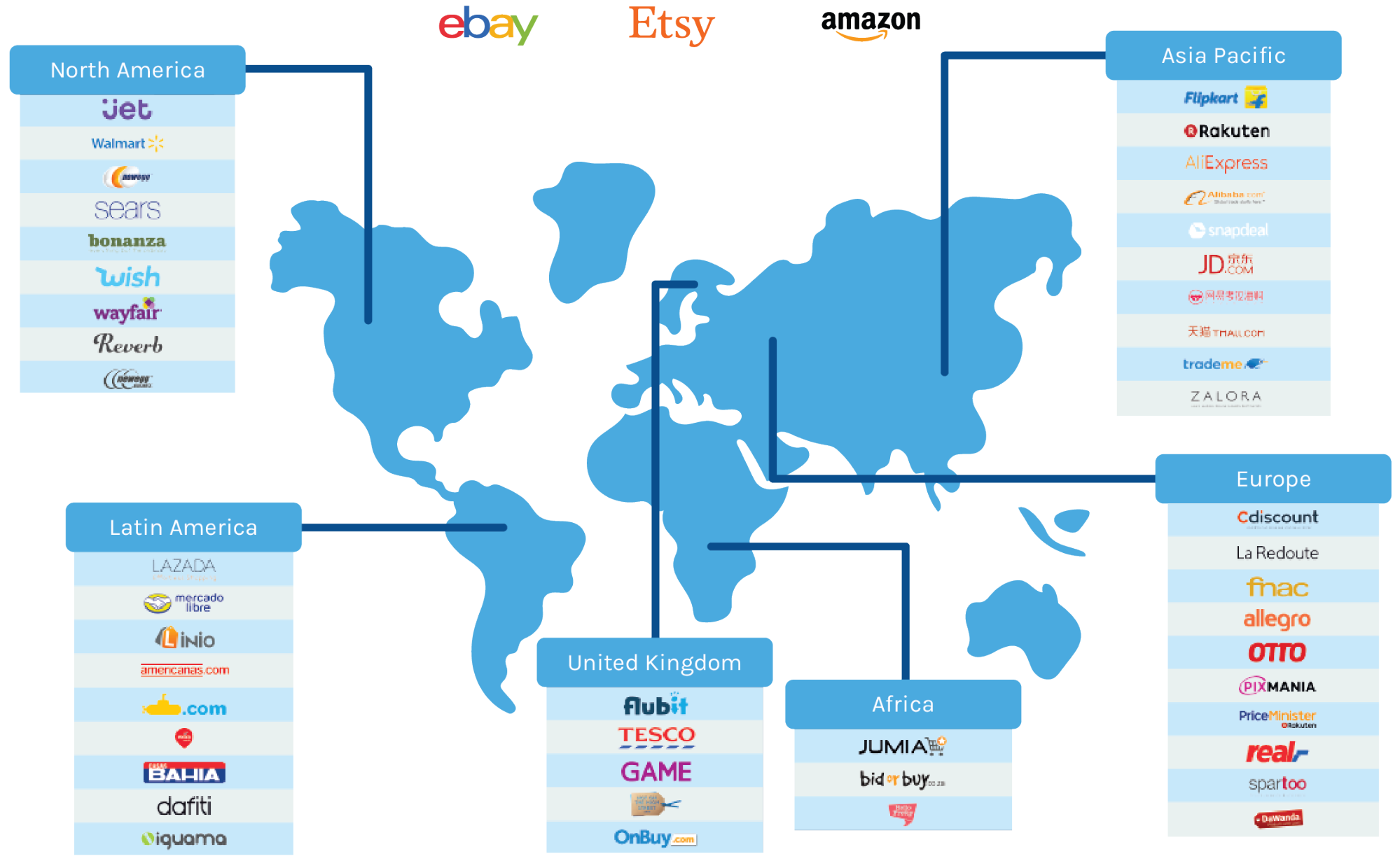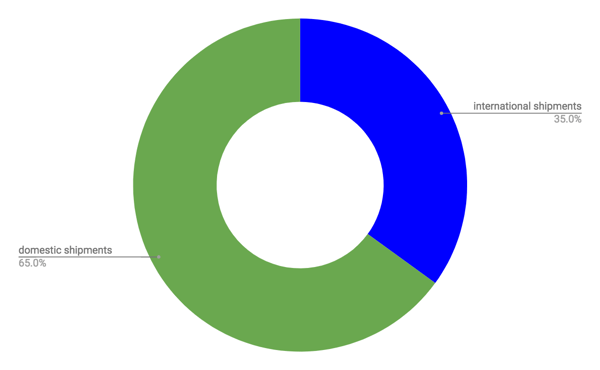Small businesses are savvier today than ever before, and with that, recognizing that they are a very time poor audience is key.
We saw a 48% increase in the average amount of shipments our SME merchants did in 2018, versus 2017.
It is now more important than ever that merchants are where their customers are, both online and off, so they can continue to grow.
Tips for eCommerce Store Growth
1. Stay on top of your digital marketing efforts. Online and brick-and-mortar stores going omnichannel has become the standard, making eCommerce more competitive than ever.
- Focus on SEO. As the paid marketing landscape becomes more competitive and expensive, do your business a favor by focusing on organic search. By doing keyword research, optimizing your product categories and product pages, investing in a blog - you can increase your direct traffic, customer efficiency and save money on paid marketing efforts.
- Social media matters. Your digital presence is an extension of your product. It’s your voice, and in turn, your brand. Maintaining your social media platforms has effectively become a requirement of managing a healthy business. At the baseline, your engagement on channels like Facebook or Twitter helps your build awareness and create conversations with your potential buyers, while also allowing your products to stay top of mind amongst relevant tastemakers.
- Diminishing returns on influencer marketing. Parallel to managing a lively social presence, there should also be a focus on authentic marketing. Your customers will continue to be overly saturated within their digital experience – your job is to no longer find the voice with the most followers to promote your product, but instead your most real voice. Customers are looking for “real” experiences and voices; hype-selling only works in the short term, but has a negative effect in long-term brand loyalty.
- Get smart on paid marketing. As the eCommerce space continues to grow, the paid marketing space will continue to innovate and grow. It’s your job as a business owner to invest only once you’re set up for success. Set up your website analytics, conversion goals, and test, test, test! There is no one-way approach to success; instead, start small and have variants. Test one channel at a time, vary your creative assets, and try new paid ad types to generate leads; remember, if something doesn’t generate returns right away - it’s not a failure, try something new!
- Don’t ignore email marketing. When done right, email marketing can increase engagement with your audience and drive sales. It is one of the most cost-effective and powerful tools at your disposal. It can drive sales, build your customer base, and, ultimately, improve your cash flow via an extremely personalized and targeting approach.
2. Exceptional customer service is key to eCommerce growth. As the internet continues to be the chosen place for people to buy, there is an increasing requirement for exceptional customer service, to improve check-out flow, and maintain retention.
- Create a personalized experience for your customers. Shoppers expect a personalized experience throughout their journey. This can include having an account of their past purchases, check-out information, and offering a selection of similar items for future purchases. One way to do this is integrating your eCommerce store with Easyship for all-in-one inventory syncing, shipment information, and order history.
- Live chat with your customers. Today’s market expects instant gratification; thus, having a live chat enables a customer to get their answers ASAP. Live chat can address customer concerns, provide a great experience, and result in profitable sales.
- Connect with customers and help resolve issues through social media. One of the most asked for improvements in customer service are increased and easier ways to contact customer service. When done right, successful interactions on social media can be amplified and result in positive peer-to-peer recommendations. Using a social customer service solution such as Zendesk or Hootsuite can help you manage and prioritize interactions on all platforms.
- Investment in guided solutions. Your customers are intelligent, and more often than not, are happy to self-serve; consequently, through an extensive knowledge base you can reduce the amount of queries to your customer service agents and improve resolution rates. Support pages also have the potential to become a top search result if the content proves to be extremely relevant.
3. Develop a strategic shipping policy. Your shipping solution can make or break your sale, and is your first point of interaction for your product and your end consumer. It’s growing increasingly important to deliver happiness with a strong shipping strategy.
- Your best shipping solution varies by customer. By working with multiple couriers and offering a variety of shipping solutions at checkout, you can meet and exceed expectations by giving customers more flexibility on their delivery options, ranging from cheapest, to fastest, to best valued. It can also help you appeal to a wider variety of customers who have different delivery needs.
- Fulfill from warehouses that are close to your customers. Amazon has set a new shipping precedent around 2-day shipping. Make your store competitive by leveraging well-located warehouses to lower shipping costs and shorten delivery times – both domestically and cross-border.
- Offer simple return policies. One of the leading concerns customers have is the difficulty of returning a product, so it’s critical to have a simple, easy to understand shipping policy in place. Luckily enough, Easyship has created a simple tool to help you create your custom policy. Check out our shipping policy generator and be sure you promote your policy on your homepage and product listings.



